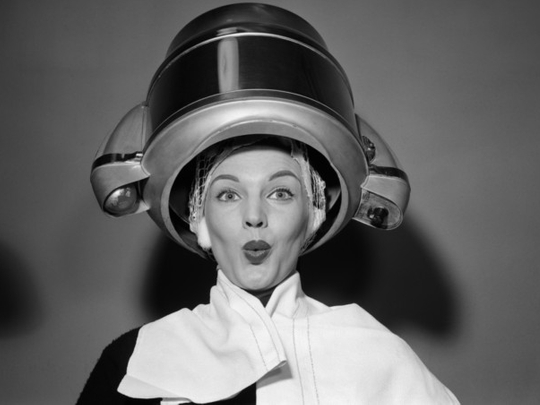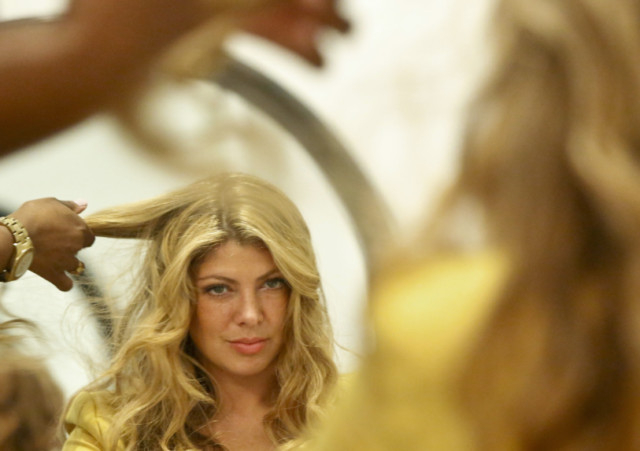
Relax, smoothen, straighten, colour, repair, clean or style — driven by consumer demand, the haircare market in the UAE, estimated at Dh507.9 million last year, is expected to increase by 27 per cent to Dh644 million by 2017, according to research by beautyworld Middle East Knowledge Partner Euromonitor International.
“Salon haircare or more premium brands of haircare is what is driving growth overall,” Sana Toukan, Research Manager, Euromonitor Middle East, tells GN Focus.
New products
A quick walkthrough at the recently concluded beautyworld Middle East, a trade fair for beauty products, hair, fragrance and well-being, confirms these positive estimates. Consumer demand for professional products for home use has fuelled growth, augmented by innovation from companies. Whether it is organic hair colour, serums made with extracts including those from horse mane, oils that add 24-carat gold shine to your hair, premium shampoo and straighteners, new products for haircare are looking for shelf space.
“Brands such as Pantene, Head & Shoulders, Wella and Braun are billion-dollar brands for the company in terms of global sales,” says Yassin Attas, Procter & Gamble Communications Director — Middle East, North Africa and Pakistan.
Established brands have seen the market grow. “Our products for hair-loss treatment, including shampoos and ampules for men and for women, contain horse mane extract. Although the product has been around since 1970s, the past five years have seen us double our growth,” says Francois Mas, Export Manager at Monaco-based Laborataries Aspeta.
The product, which has limited production, is seeing great interest from new territories such as Egypt, Iraq, Iran and Canada.
Haircare includes many subcategories, all of which are growing, says Toukan — salon haircare (almost 6 per cent value growth in 2012), hair-loss treatments (9.8 per cent), medicated shampoos (5.7 per cent), standard shampoos (7 per cent), two-in-one products (7 per cent growth), colourants (7 per cent), conditioners (8 per cent) and styling agents (8.6 per cent).
Growing market
Companies that earlier mostly catered to professionals are finding the consumer haircare sector more and more lucrative. “The retail market is growing and growing. In our company for the past few years, there is a growth of 15-20 per cent in retail sales,” says Servane Freneat of Laboratorie Ariland, a French company whose 24-carat-gold dry oil generated a lot of interest at beautyworld.
Freneat’s company has been in the professional haircare industry for more than 25 years with its styling pomade, Hair Gum. In the past couple of years Ariland has entered the retail market with products such as instant hair mascara that allows you to colour your roots, including hair in the daily make-up regime.
“Consumers do not believe in mass-market products for haircare, especially if there is any problem. They would rather go to pharmacies, salons or specialists and are inclined to use specialised products. High quality is a requirement in haircare,” Freneat tells GN Focus.
Toukan attributes the growth to a rise in disposable income and a recovering economy where people are slowly demanding more premium and value-added products. “Also, the surge in the number of salons is pushing consumer awareness higher.
“In addition, strong advertising for many international brands depicted as salon brands is pushing consumer awareness and sophistication in the market,” she says.
Mutual benefits
The consumer can now get professional-style haircare at home. “Today, consumers are looking for a complete solution for their haircare routine, because there’s more awareness about proper hair health. They don’t want to just use shampoo anymore; they want shampoo, conditioner, treatment creams, jars, oil replacements and more,” says Attas.
The rewards are almost instant for both customer and manufacturer. Ceda, a French company selling in premium categories in hypermarkets, has already found takers in the UAE. Marie-Angéle Jandia, Marketing Communications Director, says, “There is a demand for daily styling, repair and relaxing products. People with curly hair like our products. We have already signed up with a distributor [in the region].”
As the market grows, differentiation is also on its way. Not only do you get products for curly hair, frizzy hair, straight hair and coloured hair but also for various hair conditions — dry, brittle, fly away, coarse and thin are all categories the consumer is familiar with.
Products especially targeting men are also seeing growth. “Men’s haircare has seen healthy growth of almost 8 per cent in value terms last year,” says Toukan. “It is expected to continue growing healthily over the next five years. We have seen a surge in demand for all products tailored for men.”
Still, women remain the big shoppers. Says Mas: “Even though alopecia is more of a male problem, we are more successful with women than with men. About 60 per cent of our consumers are women — three women for every two men.”













